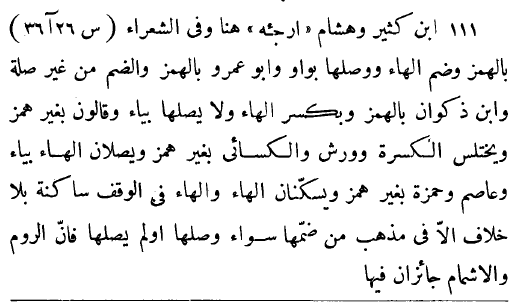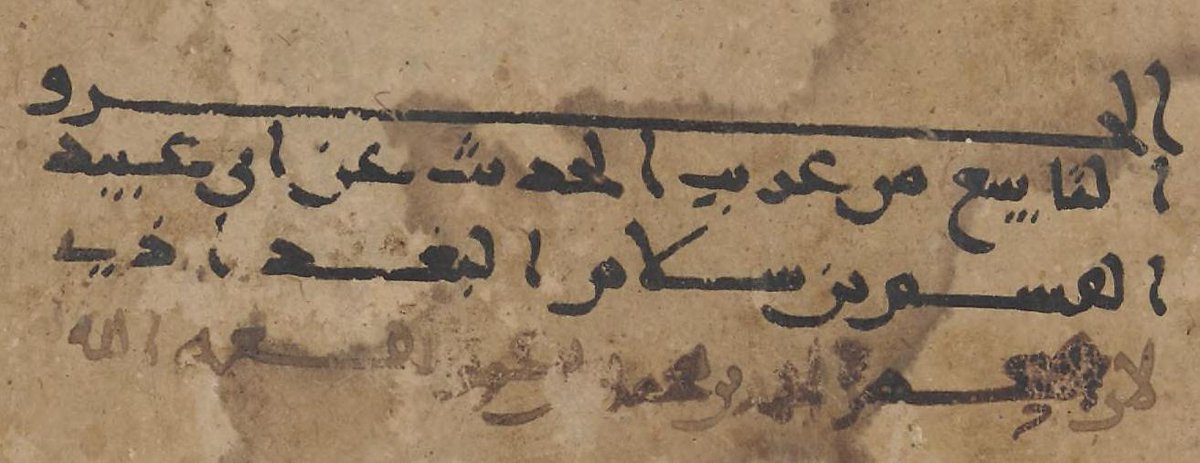A thread with annoyances:
Owens oversimplification obscures and misrepresents this.
(I also don't understand why he uses a modern commentary on the didactic poem based on the Nashr, rather than, you know, just use the Nashr).
This type of ʾimālah is very interesting:
Others (like al-Farrāʾ) do recognise this ʾimālah and its an ancient retention of a contrast from Proto-Arabic.
arabianepigraphicnotes.org/journal/articl…
(where I don't actually mention al-Kisāʾī, which is honestly a little silly, but I was just getting into that material at the time).
ʾAbū ʿAmr has much more limited ʾimālah, bizarre to call it regular.
Rawm is the replacement of a final vowel /u/or /i/ with ultrashort [ŭ] or [ĭ]. It cannot apply to qāla, since it ends on /a/.
This can thus only be done if the vowel was /u/.
nquran.com/ar/ayacompare/…
Where he got the idea from that rawm is the labialisation is utterly unclear to me.
qāla lahum, yaqūlu lahū, bi-l-bāṭili li-yudḥiḍū
ʾidġām: qāllahum; yaqūllahū; bilbāṭilliyudḥiḍū
+ʾišmām: qāllahum; yaqūlʷlahū; bilbāṭilliyudḥiḍū
+ rawm: qāllahum; yaqūlŭ lahū; bilbāṭilĭ liyudḥiḍū
ʾišmām likewise increases, adding an audible reflex of /u/.
Idġām reduces the most distinctions.






































